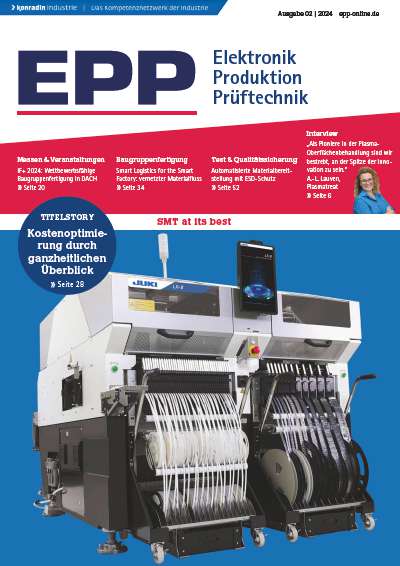What is what really counts in these days of rapid changing legislation, technological advances and increasing globalization in the area of manufacturing equipment? The oven manufacturer, BTU International, has identified the problems and needs of the users. Working in partnership with the world’s largest electronics manufacturing service (EMS) providers on its Voice-of-the-Customer program, the company has set about redefining the cost of ownership for oven design and performance which addresses the requirements of today and beyond. The result is the Pyramax reflow oven.
BTU, Farnborough, England
Lowering cost of ownership and adding value. These are almost hackneyed phrases these days as equipment vendors continue to augment products and services with features to differentiate their offering from competitors. Each company will have its own definition, amongst which are lifetime warranties, reduced maintenance, uptime of equipment, no hidden add-ons, 24-hour support, to name but a few.
The outsourcing wave
To catch the outsourcing wave resulting from OEMs focusing on core strengths, such as product design and marketing, the EMS provider has been left to pick up the work. With the EMS market predicted to produce 50% of the world’s electronics products, successful companies need a strong service orientation, getting involved early in the design to ease manufacture of the product.
Increased competition, lower profit margins and very little long-range view resulting from market globalization are the reality for today’s EMS provider. To meet the challenges of providing continuous quality at a competitive advantage, the large EMS organizations have responded by basing manufacturing facilities in emerging economies where labor and capital set-up costs are more attractive.
The Eastern European electronics industry has shown strong growth as the major multinationals take advantage of the lower labor rates, but while presenting one solu-tion to the cost-cost equation, along with it has come another set of challenges – language barriers and a skills training gap. Add to this, new legislation such as the lead-free directive, which further poses the challenge of meeting the higher temperature melting points of many lead-free alloys within a smaller process window; on-going miniaturization of next-generation products; faster time-to-market and time-to-volume for products worldwide. Under these circumstances, it is clear that the criteria for lowering the cost of ownership are even more critical.
Like the OEMs, the EMS providers are now also looking to add value and concentrate on building strategic relationships, offering design, prototyping, test, repair and industry compliance. They no longer just address the high-volume, low-mix end but are adopting a high-mix strategy which attracts higher margins. With it comes increasing demand for flexible and repeatable manufacturing processes, leaving equipment manufacturers with no choice but to re-define their development and support programs.
Five key criteria have been identified asa result of BTU’s Voice-of-the-Customer program:
• Reduced maintenance
• Improved flexibility and throughput
• Improved thermal performance
• Reduced nitrogen consumption
• Improved training and support
Reducing maintenance
A key driver to lowering overall cost of ownership for the EMS provider was to reduce maintenance time and maximize uptime. A radical redesign of the cooling system was undertaken, resulting in a special remote water cooling arrangement which removes the media away from the process chamber to a centralized chill system under the frame to dramatically improved cooling uniformity and efficiency. The sliding-out drawer system, conveniently accessed from the front of the machine rather than at the back, drastically reduces cooler tank cleaning to mere minutes, taking no longer than flux trap cleaning.
As no flux management system will collect all of the residues inside the machine, remains will inevitably condense on the coolest part of the process chamber. Cooler cleaning therefore becomes one of the most significant parts of preventative maintenance on any machine. An electronic maintenance procedure assists flux residues removal from the process chamber, and easier access to filtration and trap arrangement, together with hot zone recirculation, minimizes condensation. A further feature of leak detection has also been incorporated.
On site, maintenance procedures have resulted in a 75% reduction, with maintenance also being carried out while the machine is operational. The first system installed at Celestica has seen a 7 to 8 hour maintenance cycle dramatically reduced to less than two hours.
When it comes to accessibility, all key access maintenance points have sliding, front access panels eliminating swing out and aisle obstruction. To provide improved visibility and a more streamlined assembly line, the Pyramax has a lower profile height of 1504mm, a stipulation now made by many EMS providers in their machine specifications. Further ergonomic improvements include a stowable keyboard tray.
Improving flexibilityand throughput
To meet the market’s needs for rapid delivery, dictated by the increasingly short time frame, an EMS provider experiences from receipt of contract to start of manufacture, BTU has reduced lead times from design to delivery to two weeks – regardless of configuration. Its 3D computer-modeling package enables configuration options to be rapidly designed and emailed for approval within hours.
Further flexibility enhancements includea 24-in/610mm-process capability and shorter transition zone. The belt or rail conveyor system with a brushless DC drive motor is available in flat flex or fine mesh. Easy assignment fixed rails versus moveable rail, steel drive chain, dual lane/dual speed and improved rail lubrication applicator design are also included.
The broader process window, essential for today’s lead-free world, has been addressed by the Pyramax’s maximum operating temperature of 350°C. The ultimate level of heat transfer efficiency and thermal uniformity is achieved through BTU’s forced impingement convection technology with side-to-side gas recirculation. Hot gas is directed to board surfaces at a fast and forceful rate to achieve effective heat transfer. The easy-to-install blower plenum modules house a motor, impeller wheel, four-outlet impeller shroud, heater and a perforated plate – all in one assembly that is easy to maintain and upgrade.
The heating element and gas distribution are located above and below the conveyor belt in each heated zone and, by forcing heated gas through the perforated plate under static pressure, high-velocity ‘cones’ of heat are produced up to 2.5-in from the plate which then impinge upon the surface of the board assemblies as they pass through the oven. A key driver in reducing costs was to reduce nitrogen consumption, which has been achieved, typical results being 25% less than in previous ovens.
Oven control system
The Windows NT-based oven control software offers user-friendly interfaces for remote diagnostics and data logging, automatic recipe scheduling, automatic product temperature profiling as well as temperature delta alarm to signify minimum and maximum temperatures. An optional feature is the integrated KIC Pilot automated self-profiling software system which provides the oven with the intelligence to tell the operator how to set it up, and does not allow the operator to run product if the profile is out of spec. Featuring a simplified animation-based user interface, the KIC Pilot interfaces directly with the oven controller, and allows even the least-experienced operator to set up a profile. The Pilot automatically changes the oven setpoints and conveyor speed, and then lets the operator know when the oven is ready to run production. A key feature of the Pilot is the process window index (PWI) which is used to evaluate the quality of a profile by reducing all statistics to a single number. A PWI of 0% is optimum, less than 100% is in spec, above 100% is out of spec. The system automatically finds the oven set-up that provides the lowest PWI.
Improved training and support
The final criterion identified was to maximize training potential and improve support. An increasing problem experienced from mass globalization has been the language barriers, combined with a skills gap, and a need to train operators quickly. To overcome these problems, BTU provides 24-hour global support and has devised a web-enabled, language-independent training and support system, accessible via an authorization password from BTU. This training and support system, presented in graphic format, takes engineers through basic maintenance operations such as flux management, filter changes and includes the entire machine assembly. Further support is provided through its e-doc manual that provides technical support, detailing all part numbers for reordering purposes and close-up figures for part replacements.
Does this machineaddress the needs?
Beta-tested at three of the world’s leading sub-contract manufacturers for three to six months, feedback substantiates that the Pyramax meets the industry’s needs. According to Celestica, this oven is thermally outstanding and more efficient at energy transfer. Combined with a 75% reduction in maintenance, it would appear that BTU has designed a machine which addresses all the criteria identified by the Voice-of-the-Customer program.
EPP 151
Zusammenfassung
Die Betriebskosten sind bei Fertigungsmaschinen durchaus noch ein Feld, in dem sich manche Mark einsparen läßt, obwohl seit vielen Jahren Cost of Ownership ein beherrschendes Thema ist. Am Beispiel seiner Lötöfen und des wartungsfreundlichen Konzepts zeigt BTU, wo und wie sich noch Potentiale erschließen lassen.
Résumé
Les coûts d’exploitation des machines de fabrication sont un domaine qui permet d’économiser plus d’un franc, bien que le Cost of Ownership soit depuis de nombreuses années un thème majeur. En prenant l’exemple des ses fours à braser et du concept de facilité d’entretien, BTU montre où se situent encore des potentiels.
Sommario
I costi di esercizio sono una voce che nelle macchine di produzione offrono ancora la possibilità di risparmiare qualche lira, nonostante che da molti anni si stia discutendo sui Cost of Ownership. Sull’esempio dei suoi forni di brasatura e dei vantaggiosi concetti di manutenzione la BTU mostra dove e come sfruttare ulteriori potenziali.
Unsere Webinar-Empfehlung
Conformal Coating ist ein wichtiges Verfahren, um elektronische Baugruppen vor dem vorzeitigen Ausfall zu schützen. Damit bekommt der Beschichtungsprozess eine immer höhere Bedeutung. Dabei ist die Auftragsstärke ein wichtiges Qualitätskriterium. Nur eine zeitnahe schnelle Messung…
Teilen:


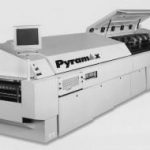

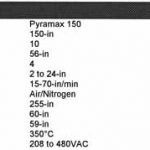
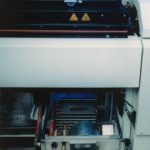
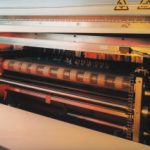
.png)



